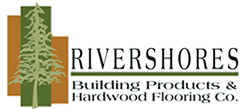Maintaining Your Hardwood Flooring
If you have purchased raw flooring that has been sanded and finished, you have had one of the finest polyurethane finishes available applied. This finish provides a protective layer for your floor. If you have purchased a prefinished floor, it has had several UV coatings applied in the factory giving it a very hard finish surface. The key to maintaining your floors natural beauty is through both preventive and regular maintenance. To assist you, we have listed several maintenance tips.
Preventive Maintenance Tips:
• Use protective walk‐off mats at the exterior doors to help prevent sand and grit from being tracked onto the floor. Sand and gritty dirt are any floor's worst enemy.
• If your hardwood floor is located in the kitchen, you may want to place a throw rug in front of the kitchen sink to catch spills and splashes. The polyurethane finish is not a waterproofing agent.
• Install proper floor protectors on the legs of all furniture in the rooms where you have hardwood. Protectors allow chairs to move easily over the floor without scuffing. Protectors must be cleaned on a regular basis to remove any grit that may have become embedded. Felt floor protectors are available at Rivershores Building Products, Inc.
• Vacuum regularly. When vacuuming your household carpets, it is a good idea to also vacuum the hardwood floor. A soft brush attachment works beautifully.
• Do not use household dusting sprays or treatments as they may cause your floor to become slick, or dull the finish. The best treatment is to sweep the floors frequently.
• NEVER wet mop a hardwood floor. Excessive water will cause the wood to expand, possibly damaging your floor. The finish put on your floor is to protect the stain and the wood surface. It is not a bonding or waterproofing substance.
• Keep high heeled shoes in good repair. Heels that have lost their protective cap, exposing the fastening nail, exert over 8,000 lbs per square inch of pressure on the floor. This kind of pressure will damage any floor covering.
Regular Maintenance Tips:
• Food spills should be cleaned up in a timely manner using a damp rag. Poly Care, available at Rivershores, is an excellent product. It is a waterborne neutral cleaner which leaves no residue. We do not recommend the use of furniture dusting products, oil soaps (Murphy's oil soap, etc.) or other harsh cleaning products.
• Shoe marks can be removed using a spot application of Scuff Remover, available at Rivershores Building Products, Inc. and a non‐abrasive scrubbing pad. Marks that are especially difficult to remove are best treated with a "white" grade maintenance pad and cleaner.
• Waxing is not necessary, nor is it recommended. Once you wax a urethane floor, it is difficult to re‐coat the floor, as the finish does not bond to the wax. In addition, once wax is used, you must maintain the wax AND the floor. Preventive cleaning is the key to maintaining your floor.
• Re‐coating should be done when the floor BEGINS to show wear. Do not wait until the finish is worn off and dirt and spills have penetrated the wood, or the floor will have to be sanded to the bare wood and completely refinished.
Moisture & Humidity Issues causing Cracking:
All the wood in your home will contract or expand according to the moisture in the air. Doors and windows may swell and stick during rainy seasons. In dry, cold weather, cracks and fine lines of separation may appear in wall cabinets and furniture. This is characteristic of wood because wood is a product of nature, and its natural quality is what makes it desirable.
The same reaction to humidity or the lack of it is happening constantly in your wood floors. Tiny cracks between edges of boards may appear when unusually dry conditions are produced by your heating system. Normal cracks, if truly normal, close up in summer months and no repairs are needed. This can usually be corrected simply by installing a humidifier. With a more proper balance of moisture content in the house (40 to 50%), both family and floors benefit from a healthier environment.
Topics: Care & Maintenance




